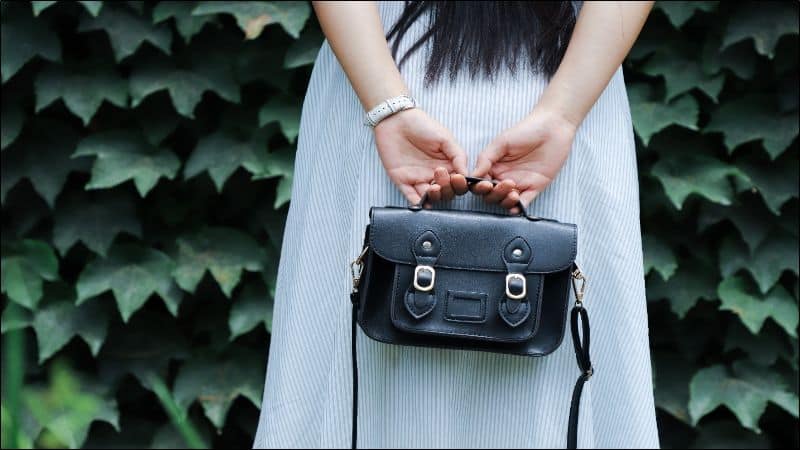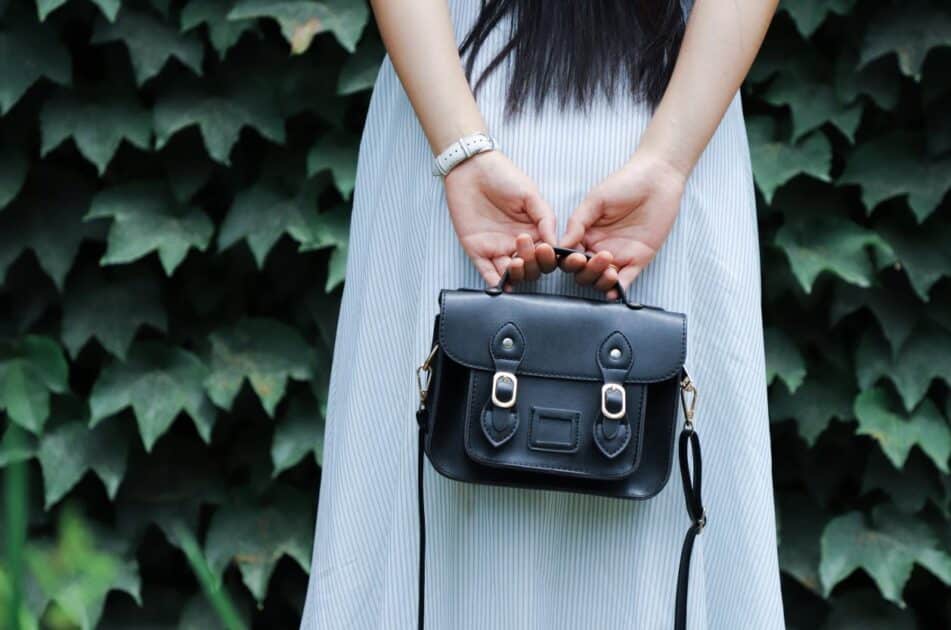Ever found yourself at the check-in counter, second-guessing your luggage choices? You’re not alone. The rules about what you can bring aboard a flight can be as confusing as they are strict. But don’t worry, you’re about to become a packing pro!

Knowing the ins and outs of airline baggage policies is key to a hassle-free trip. So, can you take both a handbag and hand luggage on your next flight? Let’s dive into the specifics and make sure you’re in the clear before you reach the airport.
What is hand luggage?
As someone who appreciates the art of travel and fashion, you know your hand luggage is your travel companion—it’s the bag you take on board with you. Think of it as a portable closet, but Remember: size matters. Airlines are strict about dimensions. Typically, hand luggage shouldn’t exceed 22 x 14 x 9 inches.
Key Criteria for Hand Luggage:
- Size: Should fit in the overhead bin or under the seat.
- Weight: Usually has a weight limit—check your airline’s policy.
- Contents: Governed by security regulations. Liquids in containers larger than 3.4 ounces? Forget it.
Airlines might charge you if you get this wrong, so always double-check the size and weight restrictions. It’s all about maximizing space while adhering to the rules.
Ideal Hand Luggage Features:
- Durable material
- Lightweight construction
- Easy access compartments
- Wheels or straps for mobility
Your hand luggage is more than a bag. It’s a statement. Whether you’re pulling a sleek rollaboard or toting a designer duffle, it says a lot about you. It’s not just about getting from A to B; it’s about doing it in style, with everything you need at your fingertips.
Pro Tip: Ensure your essentials are in your hand luggage. Unexpected layovers or check-in luggage mishaps won’t catch you off-guard. Always be prepared for the journey ahead.
- Roll your clothes to save space.
- Use packing cubes for organization.
- Keep electronics and chargers accessible.
Mastering the art of hand luggage means balancing requirements with personal flair. You’ve got the bag; now make the most of it. Stay savvy and stylish.
What is a handbag?
When you’re coordinating your airport outfit, you might ponder the role of a handbag. Typically, a handbag is a smaller purse or pouch designed for personal items. It’s the go-to accessory for carrying your essentials – think wallet, keys, and phone. Fashion and function merge in this indispensable piece. Don’t get it twisted though; a handbag isn’t just about utility. It’s a fashion statement, a polish to your look, and often, an indicator of your style.
Handbags come in various shapes and sizes, and they’re crafted from all sorts of materials. You’ve got leather for a classic touch, canvas for the casual days, and even vegan options for the eco-conscious. The fashion industry loves to innovate, so you’ll find handbags adorned with everything from simple clasps to elaborate embellishments.
Versatility is key in the life of a handbag. Some prefer a tote for its ample space, while others love a sleek clutch that complements an evening dress. The crossbody keeps things hands-free, and the satchel brings a touch of professionalism to the table.
In terms of travel, a handbag usually qualifies as a personal item. Airlines often allow it alongside your hand luggage, but it’s crucial to check your carrier’s policy. Dimensions are key; don’t be caught off guard at the gate with an oversized bag.
Remember, a handbag isn’t just a container; it’s an extension of you. Whether you’re jet-setting or just stepping out for coffee, the right handbag makes all the difference. It meshes with your hand luggage to create a cohesive travel experience, ensuring you have what you need at arm’s reach. So next time you’re packing, carefully select a handbag that ticks all the boxes – functionality and flair.
Airline baggage policies
When planning your trip, knowing airline baggage policies is crucial. Different airlines have different rules about what counts as hand luggage versus a personal item like a handbag. Most often, you’re allowed one piece of hand luggage and one personal item.
Understanding Hand Luggage and Handbag Allowances
Check the airline’s website before you pack. They list dimensions and weight limits for both hand luggage and personal items. Use a tape measure; don’t guess. Airline policies will determine if your handbag can fly with you at no extra cost or if it requires checking in.
Hand luggage is typically the larger of the two. Think small suitcases or backpacks that fit in overhead bins. Handbags are generally smaller — purses, briefcases, or laptop bags that fit under the seat.
Navigating Through Varying Airline Restrictions
Be mindful that low-cost carriers often have stricter policies. They might allow only one item onboard without an extra fee. In such cases, a handbag might need to fit inside your hand luggage.
Tips for Compliant Packing
- Pack smart to utilize space.
- Wear bulkier items.
- Use packing cubes.
Remember, if your handbag is bulky or packed full, it might be considered hand luggage. Plan your packing to avoid surprises at the gate.
Additional Baggage Fees
Airline fees for extra or overweight bags can be hefty. Check the fine print on your ticket or the airline website. Plan and pack accordingly to dodge unwanted charges.
By being informed and prepared, you’ll navigate airline baggage policies with ease. Just remember to stay updated as policies may shift. Always double-check before you head to the airport. Keep your travel stylish and hassle-free by choosing hand luggage and handbags that comply with airline policies while catering to your personal needs and taste.
Can you take both a handbag and hand luggage?
« Where Does Handbag Leather Come From? Unveiling the Surprising Source Journey
How to Check Coach Handbag Serial Number: Spot Authenticity with Ease »
Traveling smart means knowing the ins and outs of airline regulations. When it comes to taking both a handbag and hand luggage on a flight, the answer is typically yes, but it’s never that simple. Each airline has its own set of rules that you’ll want to familiarize yourself with before heading to the airport.
Airlines often refer to your handbag as a “personal item” and your hand luggage as “carry-on luggage.” Your personal item should fit under the seat in front of you while the carry-on is stored in the overhead bin. What’s crucial is adhering to the size and weight limitations outlined by the airline for both items.
Check the Airline’s Baggage Policy:
Before you book your ticket, scan the airline’s baggage policy online. Airline websites list acceptable dimensions and weight for personal items and carry-on luggage. Ignoring these specifics could lead to unexpected fees or, worse, having to check one of your bags at the gate.
Size and Weight Guidelines:
| Item | Maximum Size (inches) | Maximum Weight (lbs) |
|---|---|---|
| Personal Item | 18 x 14 x 8 | 15 |
| Carry-On Luggage | 22 x 14 x 9 | 22 |
Strategies for Compliant Packing:
- Choose a handbag that’s versatile and compact to avoid hassles.
- Consider multi-functional handbags with compartments for organization.
- Keep it light to stay within the weight limits.
Other Considerations:
- Premium tickets or frequent flyer status often offer more flexibility with hand luggage.
- Some regional jets have smaller overhead compartments, limiting the size of your carry-on.
- Handbag style doesn’t usually matter, but always opt for functionality and ease of access.
Remember to pack smart and understand what you can bring aboard. Your fashion-forward, functional handbag paired with a sleek piece of carry-on luggage shouldn’t cause any problems given you’ve done your research. Keep your valuables and must-haves close, and ensure a smooth start to your journey without the trouble of baggage issues.
Tips for packing efficiently
When you’re gearing up for your next flight, packing can feel like a strategic game of Tetris. Here’s how to pack effectively while ensuring your handbag and hand luggage fit airline regulations.
Deciding What to Take:
Start by laying out everything you think you’ll need, then halve it. Seriously, you probably won’t use that third pair of shoes. Stick to essentials and remember that layering is key to adaptable fashion choices.
- Create a Packing List: Keep track of must-haves to avoid overpacking.
- Choose Multi-Function Items: Opt for clothes and gadgets that serve more than one purpose.
- Go for Neutral Colors: These are great for mixing and matching outfits.
Organizing Your Space:
A well-organized bag is easier to pack and unpack. Use packing cubes or compression bags to maximize space and keep similar items together. Roll clothes instead of folding to prevent wrinkles and save room.
- Use Your Handbag Wisely: Store important documents and valuable items in your handbag for safety and easy access during the flight.
- Keep Liquids Accessible: Place toiletries in a clear, resealable bag at the top of your hand luggage for security checks.
Know Your Limits:
Check your airline’s baggage policy again. Utilize every inch that’s allowed but keep it manageable. Remember, you’ll be lugging this around the airport.
- Weigh Your Bags: Avoid surprises at the check-in counter by weighing your luggage beforehand.
- Wear the Bulk: Don your heavier items, like coats or boots, to save space in your baggage.
With these smart packing strategies, you can avoid excess baggage fees and start your trip stress-free. Keep your belongings secure, accessible, and within limits. Now you’re all set to jet-set with style and ease.
Conclusion
So there you have it! With a little savvy packing and a keen eye on your airline’s baggage policy, you’ll breeze through your next trip with all your essentials in tow. Remember to weigh your bags before you leave home and consider wearing your bulkier items to save space. Happy travels and here’s to never being caught out by excess baggage fees again!
Frequently Asked Questions
What are the key strategies for efficient packing?
To pack efficiently, halve your initial packing list, select items that serve multiple purposes, and utilize packing cubes or compression bags to save space.
How can travelers ensure they stay within airline hand luggage regulations?
Travelers should familiarize themselves with the airline’s baggage policy, weigh their hand luggage before departure, and wear heavier items to the airport to reduce their bag’s weight.
What is the best way to pack important documents and toiletries?
Store important documents in your handbag for easy access and keep toiletries in a transparent, accessible bag to comply with security regulations at the airport.
Can wearing some of your clothes help with packing?
Yes, wearing heavier or bulkier items, such as coats or boots, can help save space in your luggage and keep the weight of your bag down.
How can packing cubes or compression bags be useful?
Packing cubes or compression bags help organize your belongings and can compress clothes to take up less space, allowing you to pack more efficiently.










